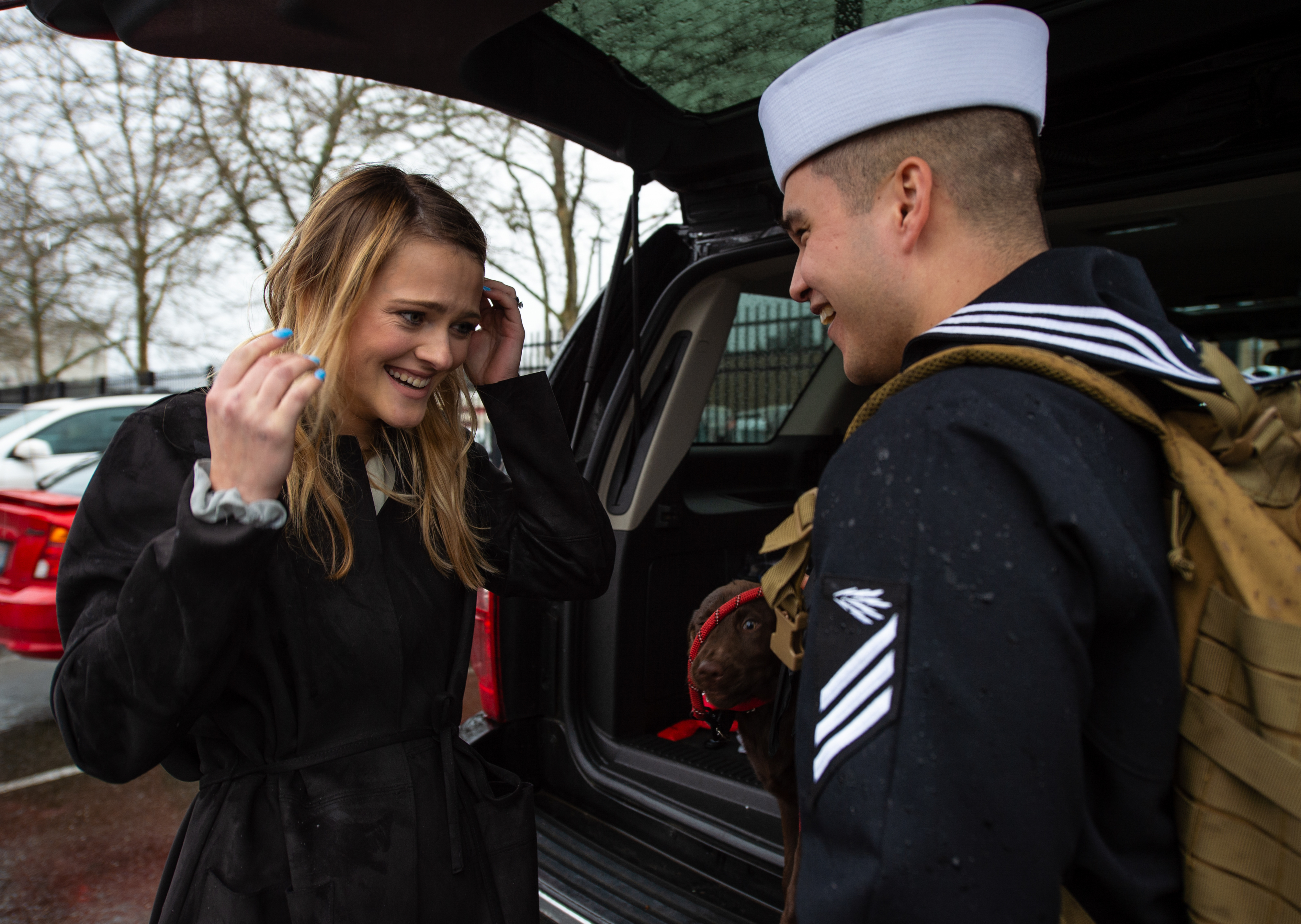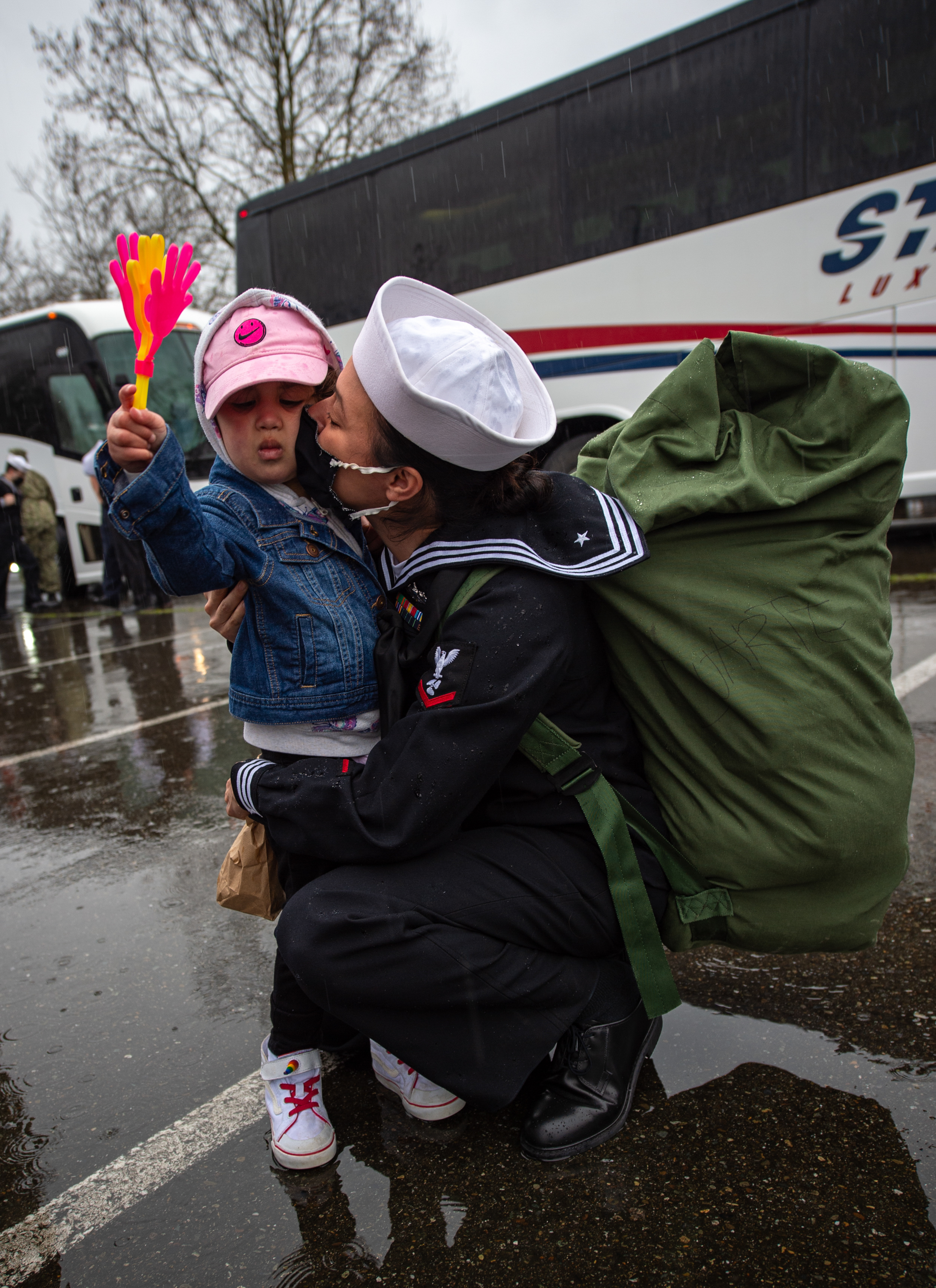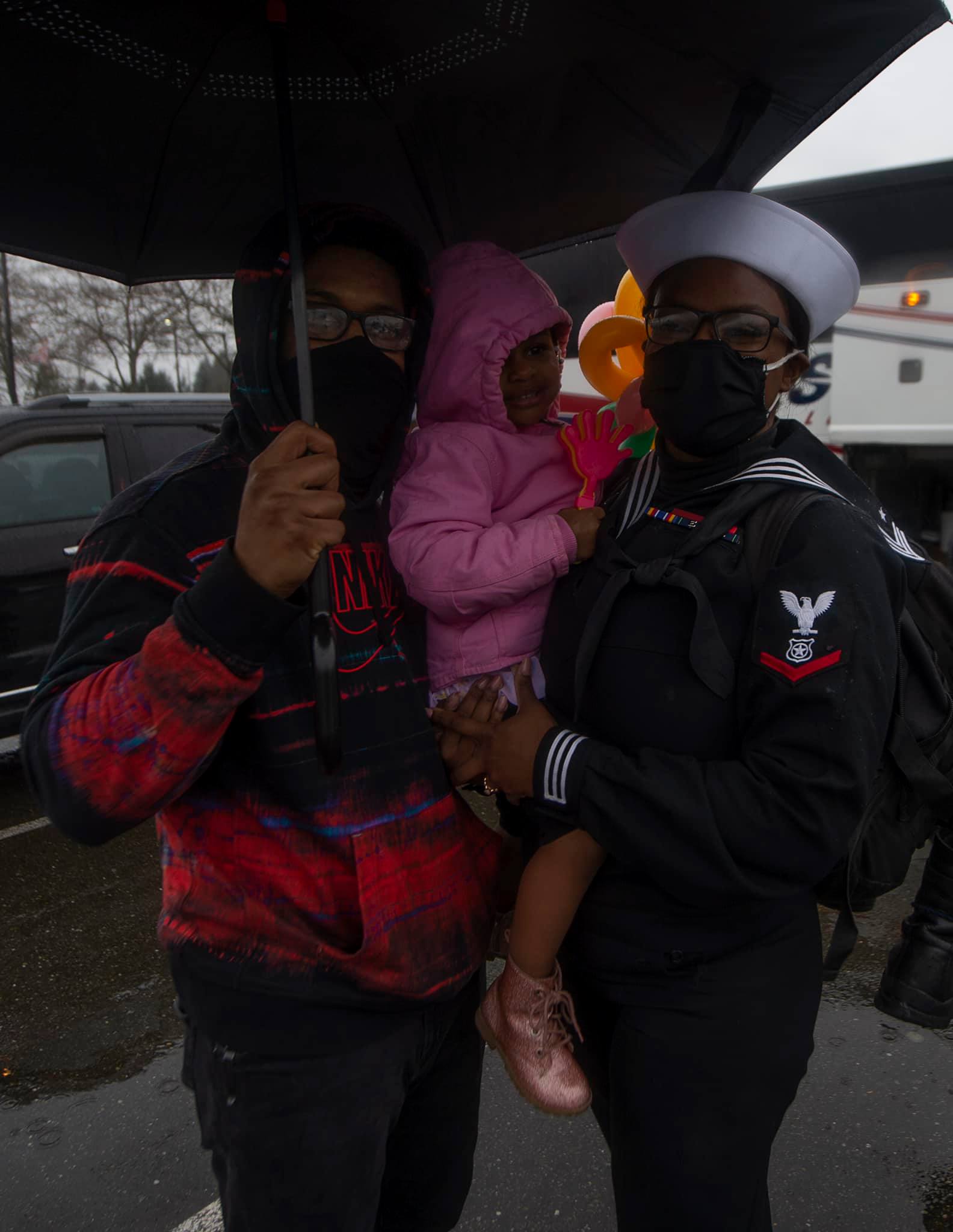
This post has been updated to reflect that some Nimitz sailors departed the ship on March 4 during a stop on Indian Island, Wash., when the Navy announced the carrier had returned home in a news release. Remaining sailors departed the ship and returned home on March 7, when the carrier pulled into Naval Base Kitsap, Wash.
USS Nimitz (CVN-68) is now home, 341 days after sailors left their homes and families for a marathon of quarantines, training and a deployment to the Middle East and Pacific.
Nimitz pulled into Naval Base Kitsap on March 7, bringing sailors home after they first boarded the carrier on April 1, 2020, for a 27-day restriction of movement (ROM) period – the first such quarantine period for a carrier crew since the pandemic began in earnest in the U.S. the month before.
 Sailors quarantined aboard the ship from April 1 to April 27, when they left Washington state to begin pre-deployment training and certification activities off California with the rest of the strike group. The deployment formally began June 8 – meaning the carrier crew was deployed eight months and 28 days, and away from home for 11 months and seven days.
Sailors quarantined aboard the ship from April 1 to April 27, when they left Washington state to begin pre-deployment training and certification activities off California with the rest of the strike group. The deployment formally began June 8 – meaning the carrier crew was deployed eight months and 28 days, and away from home for 11 months and seven days.
“It has been a long 11 months since we bid farewell to our homeport in the beautiful Pacific Northwest, and it feels great to be back,” Capt. Max Clark, Nimitz commanding officer, said in a Navy news release.
“I am so proud of the Sailors on board Nimitz. The hard work, dedication, and teamwork they demonstrated day in and day out to accomplish all missions assigned is commendable.”
The Nimitz CSG previously stopped in Southern California to drop off the air wing and surface ship escorts, and the carrier sailed up the Pacific Coast to return to Washington.
During the deployment, the CSG did not make any quality-of-life port calls, and sailors faced physical distancing restrictions and had to wear masks to help prevent the virus from spreading among the crew. It worked – USNI News reported that the ship saw zero cases during the entire training and deployment cycle.
The ship was at work despite the COVID-related restrictions. While in the Pacific, the Nimitz CSG conducted five sets of dual-carrier operations and worked closely with partners and allies like India, Japan and Australia. In the Middle East, the CSG supported operations in Afghanistan, Iraq and Syria; supported the 33-nation coalition Combined Maritime Forces (CMF) and the 8-nation coalition International Maritime Security Construct (IMSC) to ensure the free flow of commerce and maritime security in the region; and operated off the coast of Somalia in December to support Joint Task Force –Quartz and Operation Octave Quartz during a repositioning of U.S. forces within East Africa.
“The pandemic changed a lot of things that the Navy normally does,” Senior Chief Operations Specialist Torrence Mabry said in the news release.
“Fortunately, we were the ship that was able to do it. At the end of the day, we did what we had to do while we were in 5th Fleet. We did what we had to do while we were in 7th Fleet. We did what we had to do around the world.”
“We did a great thing,” he continued. “Nimitz pulled it off, better than any other carrier so far. We wrote the book. We set the standard high and now it’s time for everybody else to follow.”



















